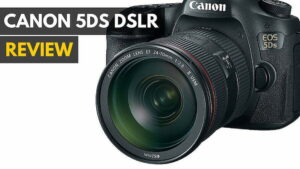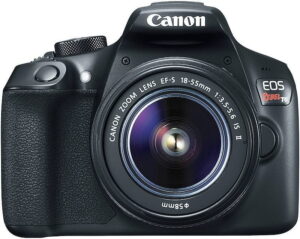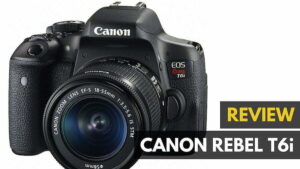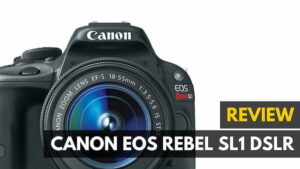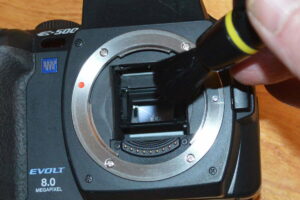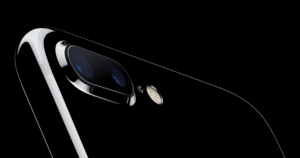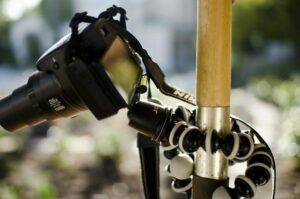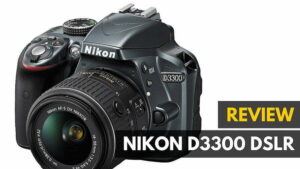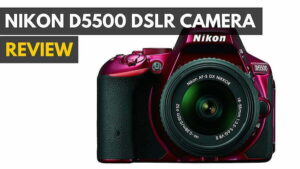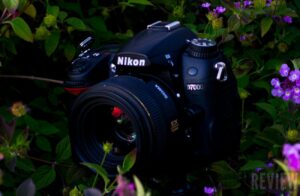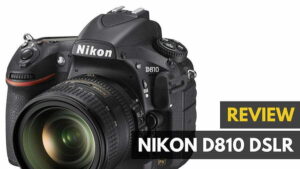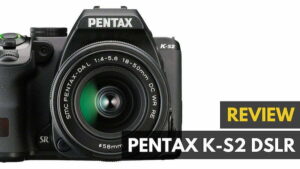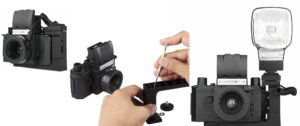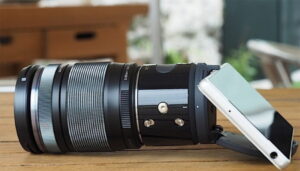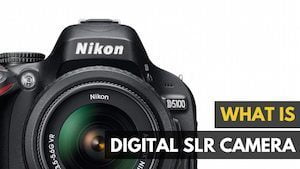Why does tech have to be complicated? Take a perfectly simple example: that of a portable and “wearable” camera that documents what you’re seeing as you go about your business. But then all kinds of “tech” — accelerometers and sensors and smartphone viewfinders — get added which drives up the price and complicates just using it. That’s not how Blynk rolls — this $130 retail time-lapse camera goes about its task simply.
If you’re always looking for new photography equipment, you’ll also like our self-leveling tripod mount review. That task is to go along with you during the day (or night) to see what you see and record it for reviewing later. If you love photography, you might also be interested in our Poppy 3D camera review. Also, you can take a look at what we think the best DSLR camera is.
Try It On For Size
Blynk is small, black, and used like a vertical black lego block. Using the attached metal clip, just pick a spot on your body, okay make that clothing unless you’re into painful piercings, and have it hang on so that the lens is facing out as your eyes do. This is the vital part, because there are no sensors to change the angle of view from vert to horz, nor can you tap into the view from a smartphone app. There IS an app, but its purpose is to connect to Blynk for setting up how often a picture gets taken (as in every second, every minute or hour, or any combo in between). For more great cameras, check out the Canon PowerShot G16, Canon PowerShot SX730, and the GoPro Hero 7.
If taking pics, it’s in time-lapse mode and, when AVi short clips video is concerned, that’s like using a portable webcam. For better video, you’ll want to check out our Campark X25 Native 4K WiFi Sports Action Camera. Other settings to take care of first include having the white balance take care of itself or go manual for being in the shade or indoors under fluorescent, etc., as well as setting the compression rate that affects picture quality and for how long the camera opens its shutter for a pic (example: setting it for action scenes means faster exposures requiring more lighting or blurs will result).
And, for sure, Blynk can be placed on any flat surface and used that way too —like maybe seeing just who’s making off with the good stuff from the fridge while you’re out (ain’t the dog). Along with recording a time-lapse in your home, the creative possibilities are endless in how you can use this time-lapse camera, from recording landscape over time to tracking the growth and milestones of a young child.
Related: If you have a heavy camera and need a tripod for balance and safety, check out our Joby Gorillapod SLR-Zoom review.
There Goes Blynk
With Blynk clipped to my shirt pocket, I pressed in on the top-mounted button to give it the go-sign, then took it for a spin outside while I ran errands and met some friends for lunch (they didn’t ask what I was wearing because they pretty much expect this kind of stuff from me anyway).
I found the view later on to reflect that of a wide angle lens — not a fisheye but pretty much broader than that of the human eye. Battery life is rated for up to 60 hours, but the number of times it’s used really dictates all that — I found a full charge of the micro-USB slot hidden at the bottom took care of a full day easily enough.
But here’s what has to be remembered: the lens is fixed-focus so if you’re too close (as in closer than ) the pic or vid won’t be in good focus. Same goes for the level of light — sunlight is fine (as long as no glare hits the lens) as is most indoor illumination but really low light levels where your eyes do okay aren’t the same for Blynk.
Kudos to having a setting where it will only “wake” up every 5 minutes to check on the lighting before either continuing or going back to sleep to ease up on draining the power on the Blynk camera.
Related: Prefer a camera with a long-lasting battery and LCD touchscreen? Our Nikon D780 review is a must-read!
Computer, Not App Savvy
I used the free computer software (PC or Mac) to connect Blynk up so what it had soaked up could be viewed and copied to the hard drive. Almost no learning curve to understanding how to use the software either — took more time to get it loaded up since it has to have Adobe Air already running.
The 4 gigabytes of internal memory take little time to transfer over, but thanks to some compression schemes, quite a lot of imaging can be saved to the camera (for example: shoot a pic every 1 second=50,000+ frames). Plus a built-in clock will note the date/time of what’s being captured if the setting has been triggered.
Document As You Go
Blynk is pretty unobtrusive — that says more about how people today take these things for granted, even if there is an LED indicator on it going green each time a photo is “snapped” (which can be turned off, FYI). But since you’re not fiddling around with it, just let it be and go about your thing. Then find out just what you’ve been up to later. Eases up on memory big time.
![10 Best Binocular Cameras in [year] 1 best binocular camera](https://www.gadgetreview.dev/wp-content/uploads/best-binocular-camera-image-300x200.jpg)
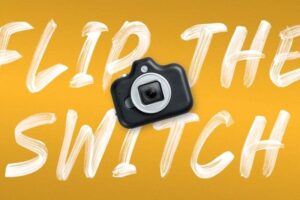
![Best Canon DSLR in [year] ([month] Reviews) 3 The top Canon DSLR cameras.||Intermediate and entry-level photographers will appreciate this mid-level DSLR offering from Canon](https://www.gadgetreview.dev/wp-content/uploads/best-canon-dslr-300x165.jpg)

![Best DSLR Camera for Beginners in [year] 5 Top DSLR Camera for Beginners|The Canon T6i DSLR offers many features for beginners.|The Nikon D3300 DSLR offers plenty of resolution for someone new to DSLR photography.|An articulated LCD](https://www.gadgetreview.dev/wp-content/uploads/best-dslr-camera-beginners-featured.jpeg)
